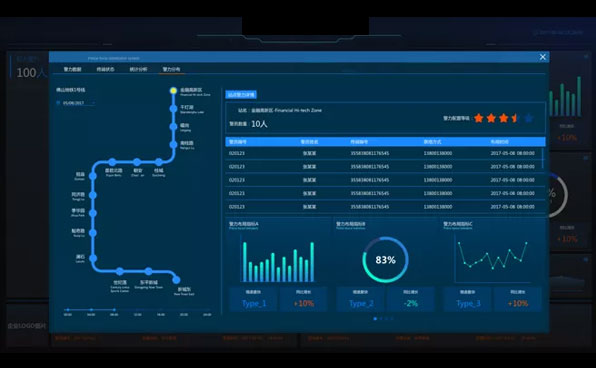
We are customer-centric and provide customized or one-stop full-stack solutions to empower all industries.

The national economy is entering a shifting period, and stabilizing growth is a key focus of the government’s work. As an important part of “stabilizing growth”, the construction of transportation infrastructure will continue to accelerate in recent years, especially the investment in high-speed rail, airports and rail transit. By the end of the 13th Five-Year Plan, more than 50 cities in my country will have rail transit. However, with the deepening of the transformation of the transportation industry, the continuous mergers and reorganizations between enterprises are becoming more frequent, and enterprises are constantly changing from government-led to market-oriented enterprises, with diversified investments; the PPP model is being promoted faster; competition in the industry is accelerating; and restructuring and splitting are deepening. Affected by the above factors, refined management within the enterprise is a challenge facing the transportation industry. Therefore, how to achieve intensive management and control, reduce costs and increase efficiency, flatten the organization and digital transformation is a difficult problem facing transportation companies.
Transportation is an important factor affecting regional economic development. In recent years, the policy dividends released by the state have provided good opportunities for the development of smart transportation. The development of the Internet of Things, cloud computing, big data and artificial intelligence technologies has provided strong support for smart transportation. Smart transportation construction has become an important means for various regions to deepen reforms in the transportation field and an important breakthrough in solving existing transportation problems and improving the level of transportation management.
Smart Transportation Big Data Platform
The smart transportation big data platform establishes basic databases, business databases and subject databases for the storage of aggregated data, and uses artificial intelligence technology to detect, clean, add data labels and manage security classification. It conducts traffic index analysis, flow tracing analysis, safety analysis, historical warning query and other related analysis on people, vehicles and roads from different dimensions, realizes data interconnection and in-depth mining, and unified control and coordinated regulation of business systems.
Geographic Information Service Platform
The geographic information service platform encapsulates thematic maps, weather maps, planning maps, image maps, maps, etc. in the transportation system to provide an operating environment such as map display, traffic flow analysis, real-time images, road conditions and events, and business topics for the upper-level application system of smart transportation; it provides basic data and basic functional services such as geographic information graphics for various application systems in the transportation industry.
IoT Management Platform
The IoT management platform provides a secure, stable and efficient connection platform for IoT device access, helping users to establish a secure and reliable two-way connection between terminal devices and the platform. The IoT management platform collects terminal device data in real time and can send data to devices by calling APIs to achieve the purpose of remotely controlling massive devices. At the same time, it provides a rule engine that is connected to many of Powerleader’s cloud products to help users quickly integrate applications.

Integrate multi-source information resources in transportation industries such as highways, expressways, urban roads, buses, taxis, passenger and dangerous goods vehicles, railways, ports and shipping, and aviation, and conduct data detection, cleaning, analysis, and mining to transform data into assets and improve data utilization value.
The use of visual resource monitoring and simple operation and maintenance management methods can help improve employee work efficiency. It can achieve unified management and scheduling of software and hardware, flexible configuration of multiple resources, and reduce the complexity of system operation and maintenance.
Blade Transportation Cloud integrates data from various systems, shares data, and conducts in-depth data mining to provide more favorable data support for the operation and maintenance of various types of transportation and provide an effective basis for decision-making.